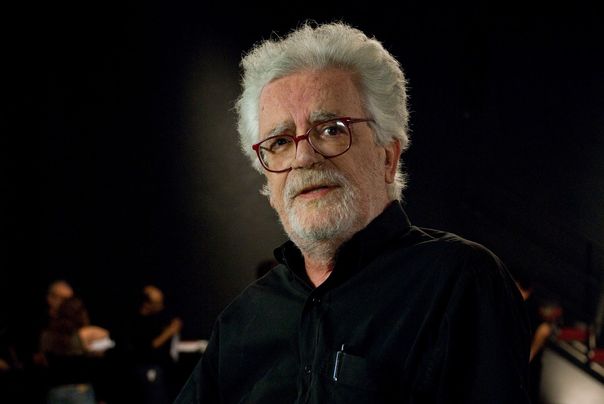The deception of the eye or the relative truth of cinema.
Last monday, March 24th at the Degollado Hall of Guadalajara´s Expo took place the launch of the book Homenaje a Eduardo Coutinho (A tribute to Eduardo Coutinho) as one of the collateral events of the Festival Internacional de Cine de Guadalajara 2014.

Eduardo Coutinho photo by: Videofilmes.
Speaking about the work of this outstanding Brazilian documentary maker I wanted to remember one of his most interesting pieces, I am talking about JUEGOS DE ESCENA (Play scene 207) which reveals from its very conception of a marked playful title intent based on the manipulation of the viewer, doing it by casting to convene to scene a group of 16 women whose biographies are formidable excuse for a rehearsal of cinema as staging play and handle human emotion as a pretext of universal value. For this, the director uses fixed resources such as camera and close ups through which shows regardless of their motivations, of their conventional Talking Heads perhaps the only unique classic documentary case traces in a contemporary work, , committed to dilute the borders between reality and fiction in favor of the generic hybridist. From there that the ambiguity is one of the quintessential discursive strategies, achieved from a smart management of the metafilmic (film that thinks) speech in which it is seen, for example, in a symbolic contraposition the spaces where the participants parade (passing by step ladders and stage) as an extension of their respective internal and external worlds(note that here the traditional roles are subverted because the interviewer is facing the audience like an actor on a play, while the actresses remain giving us their back which causes elements that foster weirdness).To this we could add the view of the cameras at certain times as well as the directors voice off camera, who stars overwhelming and authentic confessions sometimes, and others completely demonstrative and imposts attitudes that pass through credible from boasting a superb performance.
This reflective wiliness and critic accent, explains how everything that happens before the camera tends to artifice, to the fable, even to the true protagonist of the story because unconsciously succumbs to a gimmicky construction from memory that stops being spontaneous to be without registration, dramatic and transcendent. The work is also very generous from the cultural point of view because it allows us from the behavior of the actresses-characters, that observes certain tragicomic accents that seems to describe a generic social profile; not to mention the importance of religious symbols in which superstition gains ground, from morbid longing and attachment to their loved ones as if they continue with life in dreams. As this is an evocative documentary, performatic, which shows how naive we can be before the infinite seduction of the universe created by the film.
By Rubens Riol Hernández.

